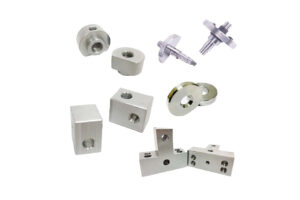What is CNC Machining and How Does it Work?

CNC machining is a highly advanced technology that has revolutionized the manufacturing industry. It is a process that involves the use of computer-controlled machines to create intricate and precise parts and components. In this article, we will explore what CNC machining is, how it works, and its advantages over traditional machining methods.
What is CNC Machining?
CNC (Computer Numerical Control) machining is a manufacturing process that uses computer software and hardware to control the movement of cutting tools and machines to create precise parts and components. The process involves a series of steps that include designing the part in CAD (Computer-Aided Design) software, converting the design into machine-readable code, and programming the CNC machine to execute the code.
How Does CNC Machining Work?
CNC machining is a highly automated process that requires minimal human intervention. The process starts with designing the part in a CAD software, which is then converted into a CNC program. The CNC machine reads the program and executes the instructions to move the cutting tools to shape the workpiece.
The cutting tools used in CNC machining are highly precise and come in various shapes and sizes. These tools can be controlled to move in multiple axes simultaneously, allowing for complex shapes and intricate details to be created. The CNC machine can also adjust the cutting speed and depth to create parts with high accuracy and repeatability.
Advantages of CNC Machining
CNC machining offers several advantages over traditional machining methods, such as manual machining and conventional milling. Some of the benefits of CNC machining include:
1. High Precision and Accuracy: CNC machining can create parts with high precision and accuracy, down to the micrometer level.
2. Consistency and Repeatability: CNC machines can create identical parts with high consistency and repeatability, ensuring that every part is identical to the last.
3. Faster Production: CNC machines can produce parts much faster than traditional machining methods, reducing lead times and increasing productivity.
4. Flexibility: CNC machines can be programmed to create parts in different shapes and sizes, making them highly versatile and adaptable to different manufacturing needs.
Conclusion
In conclusion, CNC machining is a highly advanced technology that is transforming the manufacturing industry. Its ability to create complex shapes and intricate details with high precision and accuracy has made it an indispensable tool in modern manufacturing. The advantages of CNC machining over traditional machining methods are clear, and it is expected that CNC machining will continue to revolutionize the manufacturing industry for years to come.






